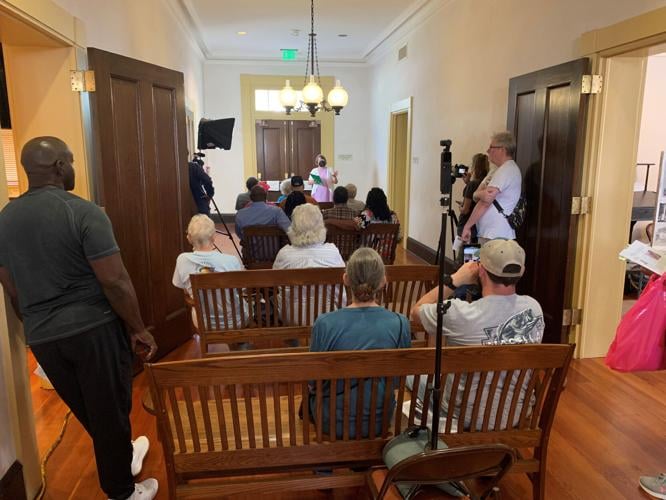Despite growing up in Clinton, V. Elaine Thompson, a history professor and author, discovered things she didn't know about Clinton while writing a college paper about her town.
When doing research and looking at the 1860 census for Clinton and its merchants, she was initially baffled by the number of shoemakers in the town. Digging deeper she learned these shoemakers were not only making shoes for the residents in Clinton but for both free and enslaved people in the area, she said.
Thompson shared her personal journey discovering more about her hometown Saturday during the town's bicentennial celebration.
After months of planning the event, organized by the Clinton is Home planning committee, current and former residents of the small East Feliciana Parish town gathered downtown around the historic East Feliciana Courthouse, down St. Helena Street and into the night to mark the bicentennial event.
Thompson, who wrote "Clinton, Louisiana Society, Politics and Race Relations in a 19th Century Small Town," said the town of Clinton was established in 1824 when Feliciana Parish was split into two parishes and Clinton became the seat of the newly created East Feliciana Parish. It was said to be situated on high ground near Pretty Creek.
The town was reportedly named for New York Gov. DeWitt Clinton. By the 1830s and with the construction of the Clinton and Port Hudson railroad, one of the first in the nation, Clinton was already becoming a prosperous town — a trading, banking and legal center.
Thompson said that while she knew some of the history of Clinton, she later learned much more. She related that when growing up she became a Feliciana Belle. She learned about the manners and activities of young females from times past. She said her mother painstakingly researched and created period dresses — making authentic period attire. These were worn by the young girls and teenagers, the belles, during pilgrimages or other special events portraying belles of the antebellum period.
Her book about her hometown also includes information about the Jewish immigrants that came to Clinton, the challenges they faced and the contributions they made to the town. She added that when packing to come for the bicentennial talk she discovered she had about one box left of her book. This means, she said, when they are gone the book will be no longer available for sale or “out of print.”
A second presentation was given by David S. Dreyer and husband and wife team of David and Barbara Walker. They spoke about the Hansberry family, Africans Americans with roots in East Feliciana Parish, and their descendants. Dreyer, a native of Indiana, lives near Natchez and is curator of the Natchez African American Museum.
Outside and mostly along St. Helena Street were food and craft vendors, local restaurants, storefront sales of local merchandise and also booths with goods from visiting businesses. A children’s village offered face painting, pumpkin painting and more with a nearby fire truck, ambulance and other first responder vehicles to tour.
State Rep. Roy Darryl Adams served as master of ceremonies for the opening ceremony held in front of the courthouse. After the presentation of the flags and pledge, two musical numbers, "America the Beautiful" and "Lift Every Voice and Sing," were sung by Shawnte Floyd.
An opening prayer was given by the Rev. Nathaniel Selders of Humble Beginnings Outreach Ministry.
A proclamation was presented to Mayor Mark Kemp recognizing the bicentennial celebration by Vicki Melion from the Lieutenant Governor’s office.
Rep. Adams thanked the Clinton is Home planning committee, the event sponsors, community volunteers and vendors for their part in making the celebration a success.
Kathryn E. “Betsy” Jones, Chief District Judge for the 20th Judicial District Court Division A, a lifelong resident of East Feliciana, talked about the history of the courthouse.












